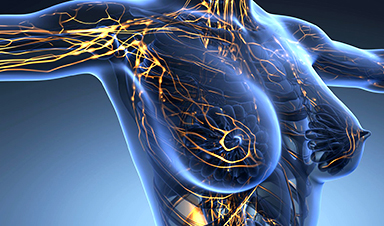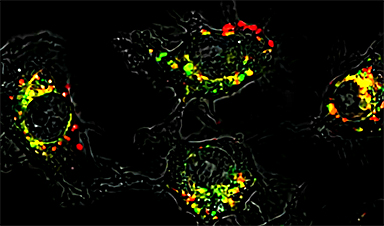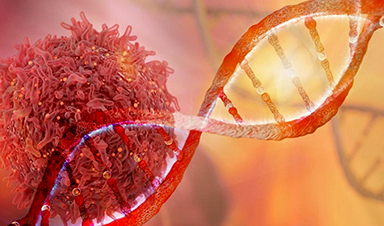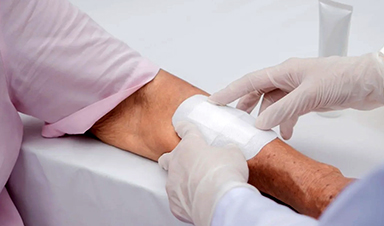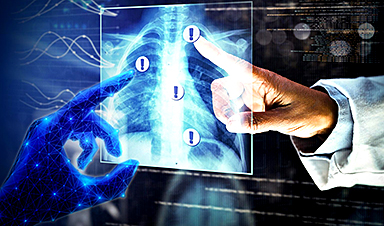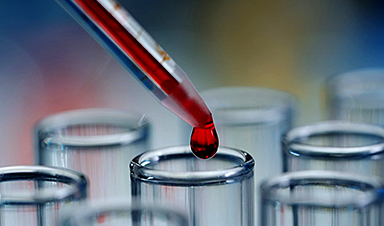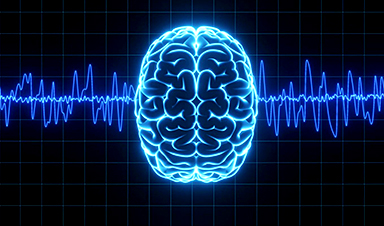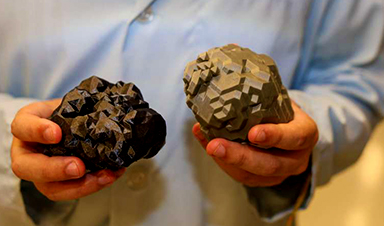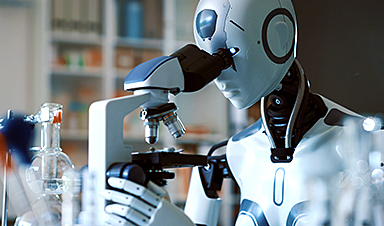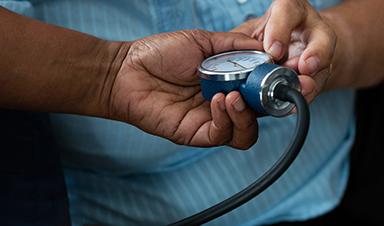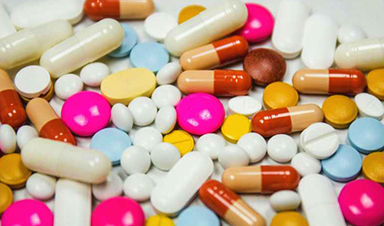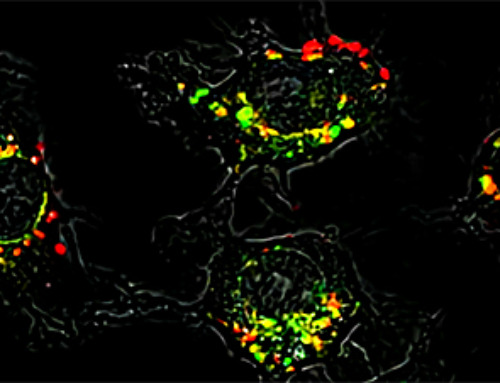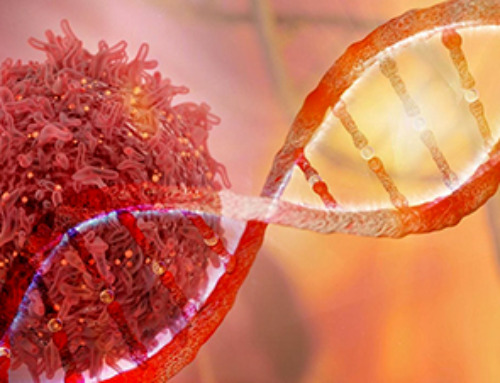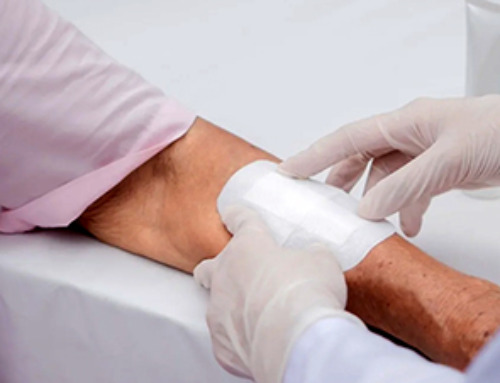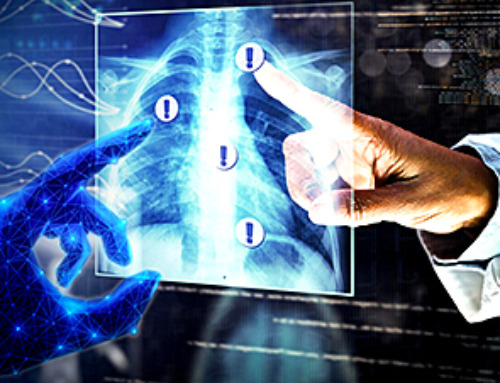The human body is made up of thousands of tiny lymphatic vessels that ferry white blood cells and proteins around the body, like a superhighway of the immune system. It’s remarkably efficient, but if damaged from injury or cancer treatment, the whole system starts to fail. The resulting fluid retention and swelling, called lymphedema, isn’t just uncomfortable—it’s also irreversible.
“With many patients, the challenge is that the lymphatic vessels that still exist in the patient aren’t working. So it’s not that you need to grow new vessels that you can think of as tubes, it’s that you need to get the tubes to work, which for lymphatic vessels means to pump,” said Brandon Dixon, a professor in the George W. Woodruff School of Mechanical Engineering. “That’s where our approach is really different. It delivers a drug to help lymphatic vessels pump using a nanoparticle that can drain into the diseased vessels themselves.”
The researchers published their findings, titled “Lymphatic-Draining Nanoparticles Deliver Bay K8644 Payload to Lymphatic Vessels and Enhance Their Pumping Function,” in Science Advances in February.
The benefit of nanotechnology for drug delivery
The drug the researchers used, S-(-)-Bay K8644 or BayK, normally targets L-type calcium channels that enable the skeletal, cardiac, and endocrine muscles to contract. In effect, the application of BayK throughout the body would lead to convulsions and spasms.
Using nanoparticles designed to drain into lymphatic vessels after injection focuses the drug solely into the lymphatic vessels, draining the injection site. As a result, the drug is available within lymphatic vessels at a locally high dose. When lymph is eventually returned into the circulation, it’s diluted in the blood so much that it doesn’t affect other systems in the body, making the drug for lymphedema applications both targeted and safe.
“Lymphatic tissues work like river basins—regionally you have vessels that drain the fluid out of your tissues,” said Susan Thomas, Woodruff Associate Professor of Mechanical Engineering in the Parker H. Petit Institute for Bioengineering and Bioscience. “This method is like putting nanoparticles in the river to help the river flow better.”
The research is the perfect blend of Dixon’s and Thomas’s respective areas of expertise. Dixon’s lab has been studying how lymphatics function in animal models for years. Thomas engineers nanoparticle drug delivery technologies that deploy in the lymphatic system.
“He develops analysis tools and disease models related to the lymphatic system, and I develop lymphatic-targeting drug delivery technologies,” Thomas said. “Tackling lymphedema as a widely prevalent condition for which there are no efficacious therapies was the perfect opportunity to leverage our strengths to hopefully move the needle on developing new strategies to serve this underserved patient population.”
Testing the therapy
The Dixon and Thomas lab teams tested the formulation using rodent models. They first mapped the model’s lymph node system by injecting a fluorescent substance to see how it traveled. Then they applied a pressure cuff to measure how the lymphatic system fails to function when compromised. From there, they evaluated how formulating BayK in a lymph-draining nanoparticle influenced the drug’s effects. The delivery system allowed the drug to act within the lymphatic vessel, as demonstrated by increased vessel pumping and restored pumping pressure, and drastically reduced the concentration of BayK in the blood, which is typically associated with unwanted side effects.
The researchers are expanding the formulation to more advanced disease models to move it closer to human application. They will also explore how it can be used to prevent or treat lymphedema in combination with other existing or new therapies now being developed.
News
New nanomedicine wipes out leukemia in animal study
In a promising advance for cancer treatment, Northwestern University scientists have re-engineered the molecular structure of a common chemotherapy drug, making it dramatically more soluble and effective and less toxic. In the new study, [...]
Mystery Solved: Scientists Find Cause for Unexplained, Deadly Diseases
A study reveals that a protein called RPA is essential for maintaining chromosome stability by stimulating telomerase. New findings from the University of Wisconsin-Madison suggest that problems with a key protein that helps preserve chromosome stability [...]
Nanotech Blocks Infection and Speed Up Chronic Wound Recovery
A new nanotech-based formulation using quercetin and omega-3 fatty acids shows promise in halting bacterial biofilms and boosting skin cell repair. Scientists have developed a nanotechnology-based treatment to fight bacterial biofilms in wound infections. The [...]
Researchers propose five key questions for effective adoption of AI in clinical practice
While Artificial Intelligence (AI) can be a powerful tool that physicians can use to help diagnose their patients and has great potential to improve accuracy, efficiency and patient safety, it has its drawbacks. It [...]
Advancements and clinical translation of intelligent nanodrugs for breast cancer treatment
A comprehensive review in "Biofunct. Mater." meticulously details the most recent advancements and clinical translation of intelligent nanodrugs for breast cancer treatment. This paper presents an exhaustive overview of subtype-specific nanostrategies, the clinical benefits [...]
It’s Not “All in Your Head”: Scientists Develop Revolutionary Blood Test for Chronic Fatigue Syndrome
A 96% accurate blood test for ME/CFS could transform diagnosis and pave the way for future long COVID detection. Researchers from the University of East Anglia and Oxford Biodynamics have created a highly accurate [...]
How Far Can the Body Go? Scientists Find the Ultimate Limit of Human Endurance
Even the most elite endurance athletes can’t outrun biology. A new study finds that humans hit a metabolic ceiling at about 2.5 times their resting energy burn. When ultra-runners take on races that last [...]
World’s Rivers “Overdosing” on Human Antibiotics, Study Finds
Researchers estimate that approximately 8,500 tons of antibiotics enter river systems each year after passing through the human body and wastewater treatment processes. Rivers spanning millions of kilometers across the globe are contaminated with [...]
Yale Scientists Solve a Century-Old Brain Wave Mystery
Yale scientists traced gamma brain waves to thalamus-cortex interactions. The discovery could reveal how brain rhythms shape perception and disease. For more than a century, scientists have observed rhythmic waves of synchronized neuronal activity [...]
Can introducing peanuts early prevent allergies? Real-world data confirms it helps
New evidence from a large U.S. primary care network shows that early peanut introduction, endorsed in 2015 and 2017 guidelines, was followed by a marked decline in clinician-diagnosed peanut and overall food allergies among [...]
Nanoparticle blueprints reveal path to smarter medicines
Lipid nanoparticles (LNPs) are the delivery vehicles of modern medicine, carrying cancer drugs, gene therapies and vaccines into cells. Until recently, many scientists assumed that all LNPs followed more or less the same blueprint, [...]
How nanomedicine and AI are teaming up to tackle neurodegenerative diseases
When I first realized the scale of the challenge posed by neurodegenerative diseases, such as Alzheimer's, Parkinson's disease and amyotrophic lateral sclerosis (ALS), I felt simultaneously humbled and motivated. These disorders are not caused [...]
Self-Organizing Light Could Transform Computing and Communications
USC engineers have demonstrated a new kind of optical device that lets light organize its own route using the principles of thermodynamics. Instead of relying on switches or digital control, the light finds its own [...]
Groundbreaking New Way of Measuring Blood Pressure Could Save Thousands of Lives
A new method that improves the accuracy of interpreting blood pressure measurements taken at the ankle could be vital for individuals who are unable to have their blood pressure measured on the arm. A newly developed [...]
Scientist tackles key roadblock for AI in drug discovery
The drug development pipeline is a costly and lengthy process. Identifying high-quality "hit" compounds—those with high potency, selectivity, and favorable metabolic properties—at the earliest stages is important for reducing cost and accelerating the path [...]
Nanoplastics with environmental coatings can sneak past the skin’s defenses
Plastic is ubiquitous in the modern world, and it's notorious for taking a long time to completely break down in the environment - if it ever does. But even without breaking down completely, plastic [...]
